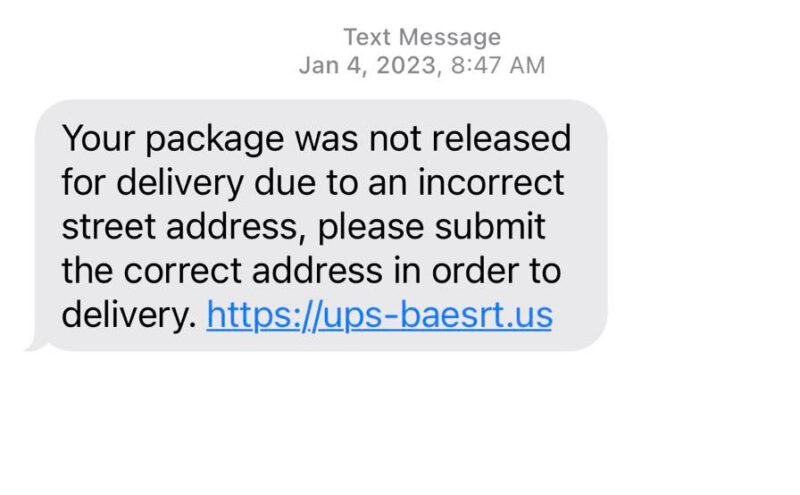Have you ever received a text message from a random number alerting you that you’ve won a prize, gift card or “special government benefits”” Or how about those alarming texts that alert you to “suspicious activity on your account”?
These types of messages are telltale signs of a “smishing” scam, which is a combination of spam SMS messages and phishing, according to consumer advice from the Federal Trade Commission.
What Is Smishing?
In smishing scams, bad actors are trying to stir you into action by telling you that you need to claim a coupon, set up delivery instructions for a package, safeguard your account, claim money from an overpayment, and so on. In some cases, the scammers might trick you into providing personal information like an e-mail password, your Social Security number, or your credit card or bank account number in exchange for a “gift” or to “restore services.”
Often, they claim to be from recognizable companies that you trust, whether it’s a well-known bank or popular subscription service, says Aura, an identity protection service.

MORE: Latest texting scam sends you a message from your own number
The scammers may be trying to get you to click on a link that then takes you to a spoofed website, where they can steal your information or install malware on your phone that can access personal and financial information, according to the FTC.
These types of text-message scams have become increasingly common, says a report from RoboKiller, an app that blocks spam texts and calls. The company estimates that during the first half of 2023, more than 78 billion robotexts flooded people’s phones, costing consumers an estimated $13 billion in fraudulent losses.
Here’s what you need to know about “smishing,” also known as SMS phishing, as well as how to protect yourself from being scammed.
What Do Smishing Texts Look Like?
One of the most common smishing texts pertains to shipping notifications, according to another report from Robokiller.
These texts will impersonate companies like FedEx, Amazon or the U.S. Postal Service, and often contain dubious links to track packages or schedule delivery. They’re really trying to get the recipient to provide sensitive information or download malware onto their phones.
Here’s an example of a smishing text that I received from scammers pretending to be UPS:

MORE: FBI warns of ‘juice-jacking’ at public phone charging stations
Some other common smishing tactics promise free gift cards, no-interest credit cards or help paying off student loans. They may also claim to have detected suspicious activity on your account or say that there’s been a problem processing a payment.
Claiming to be from a government agency is another red flag of a smishing text, because it’s pretty much unheard of for these agencies to initiate contact over text.
Another common smishing text came about during the COVID-19 pandemic, when scammers promised tests or financial relief in exchange for personal information, according to the Federal Communications Commission.
What to Do to Protect Yourself From Smishing
So, how can you make sure you don’t get swindled by a smishing scam?
If you get a text message asking for your personal or financial information, do not click any of the links, the FTC warns. It’s incredibly rare that a legitimate company would ask you for account information over a text, but if you want to suss things out, contact the company that the text message is purportedly from by looking up a phone number on the company’s website. Don’t use the contact information provided in the text message.

Aside from ignoring and deleting these spam messages, you can block spam and messages from unknown senders on your iPhone or Android phone. Additionally, your phone company might have a service that blocks spam texts, and there are apps that can help block the flurry of unwanted text messages.
If you do get smishing messages, you can copy the message and forward it to 7726 (SPAM), the FTC says. Again, be careful not to open any links in this process. You can also report suspicious messages at the FTC’s fraud reporting site.
How to protect yourself from ‘smishing’ scams originally appeared on Simplemost.com, helping make the most out of life.
> > SIGN UP for the Simplemost weekly newsletter < <



